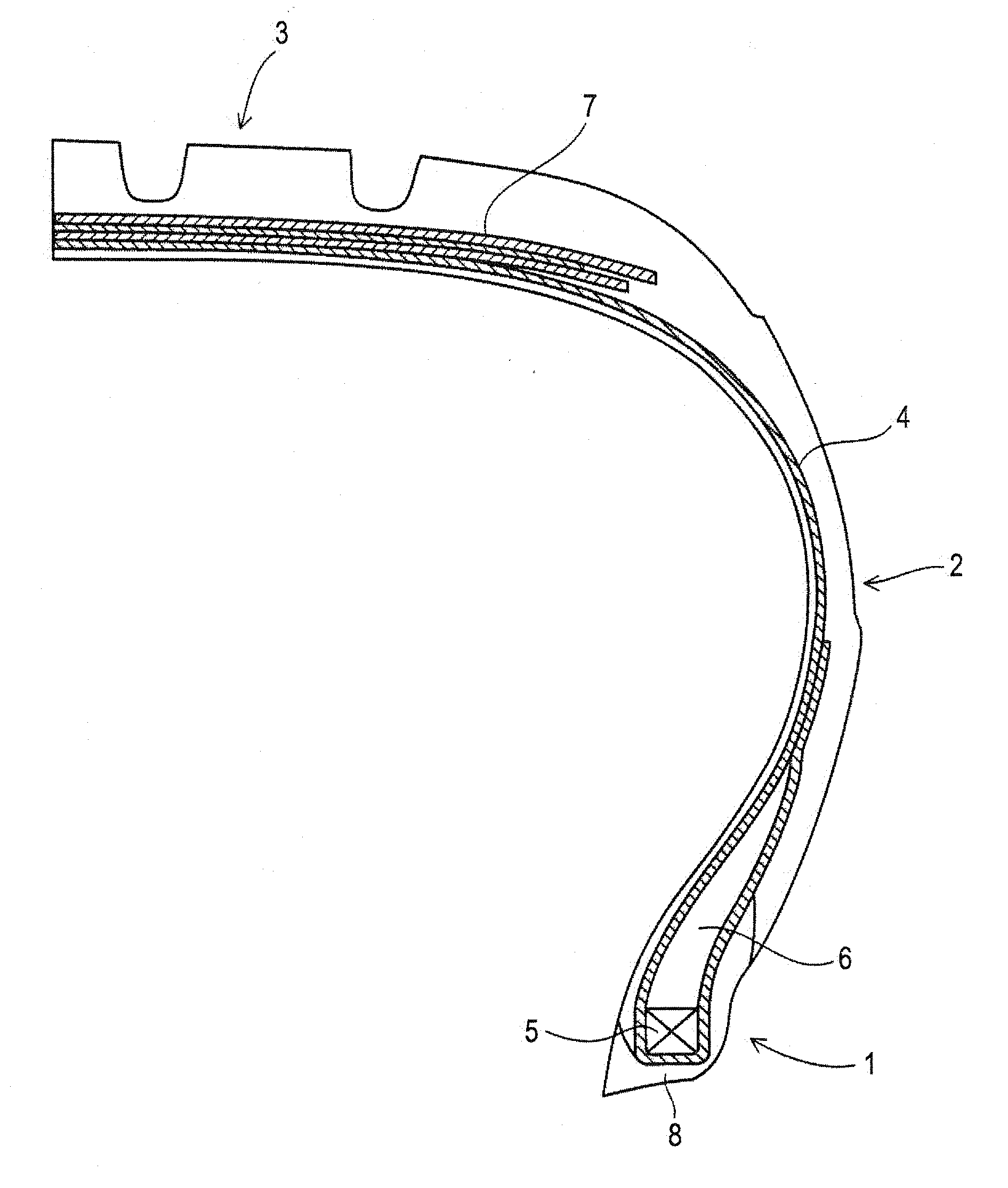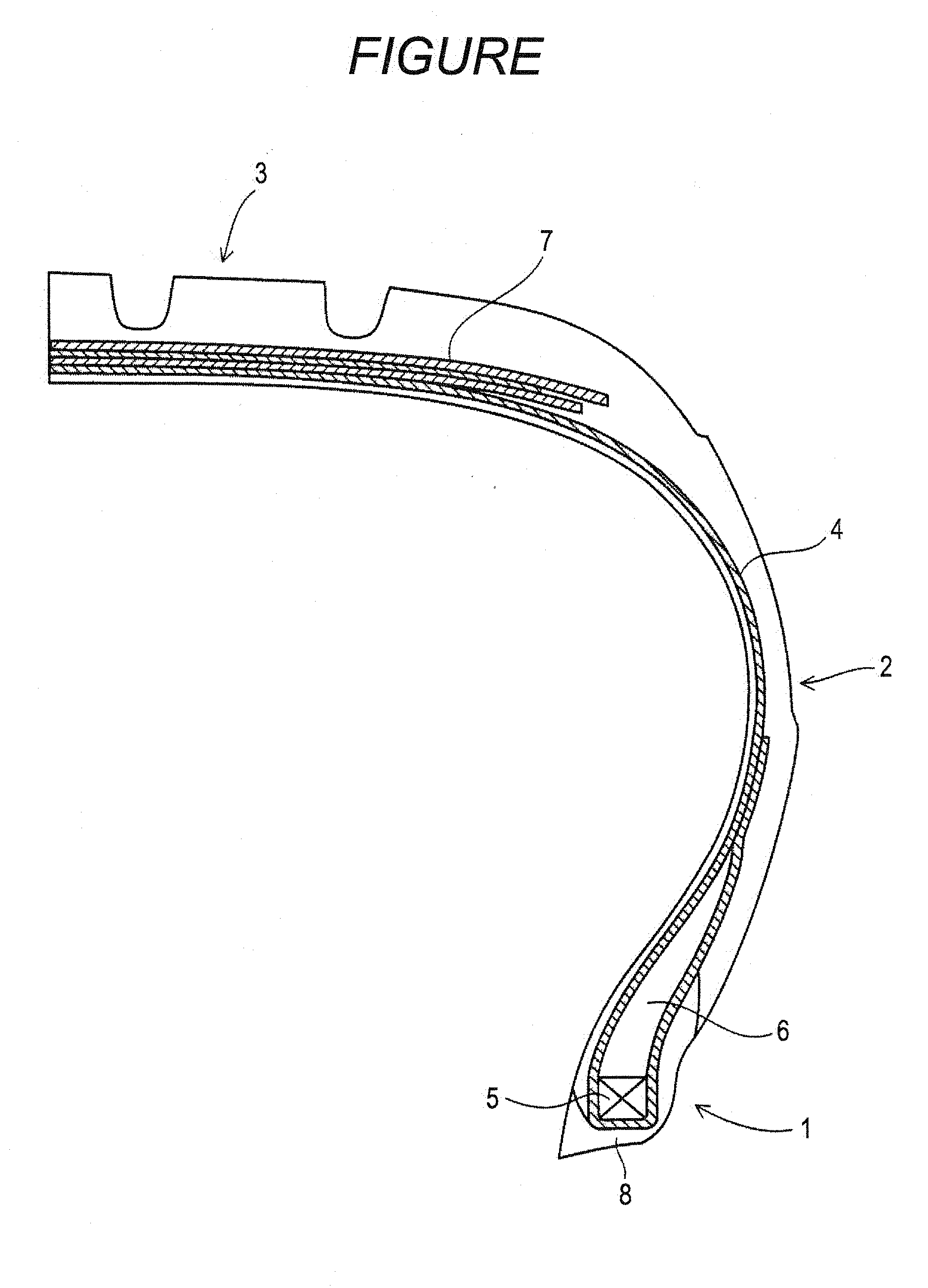Rubber composition for tire
- Summary
- Abstract
- Description
- Claims
- Application Information
AI Technical Summary
Benefits of technology
Problems solved by technology
Method used
Image
Examples
examples 1 to 5
In Examples 1 to 5 and Comparative Examples 1 to 8, 13 types of samples of the tire tread rubber composition were manufactured. Tables 1 and 2 show a blend component and its blending amount (parts by weight) in Examples and Comparative Examples. The samples in Examples and Comparative Examples were manufactured as follows: firstly, blend components other than sulfur, a vulcanization accelerator, and cyclic polysulfide were weighed. Then, the blend components were kneaded for five minutes in a 1.7-L internal Banbury mixer. Subsequently, a masterbatch was released at a temperature of 150° C. and was cooled at room temperature. The sulfur, the vulcanization accelerator, and the cyclic polysulfide were added to the masterbatch, and the resultant mixture was mixed in the 1.7-L internal Banbury mixer, as a result of which unvulcanized rubber compositions for a tire were prepared.
Thirteen types of the resultant rubber compositions were vulcanized and formed at 150° C. for 30 minutes in a p...
PUM
| Property | Measurement | Unit |
|---|---|---|
| Percent by mass | aaaaa | aaaaa |
| Percent by mass | aaaaa | aaaaa |
| Percent by mass | aaaaa | aaaaa |
Abstract
Description
Claims
Application Information
 Login to View More
Login to View More - R&D
- Intellectual Property
- Life Sciences
- Materials
- Tech Scout
- Unparalleled Data Quality
- Higher Quality Content
- 60% Fewer Hallucinations
Browse by: Latest US Patents, China's latest patents, Technical Efficacy Thesaurus, Application Domain, Technology Topic, Popular Technical Reports.
© 2025 PatSnap. All rights reserved.Legal|Privacy policy|Modern Slavery Act Transparency Statement|Sitemap|About US| Contact US: help@patsnap.com



